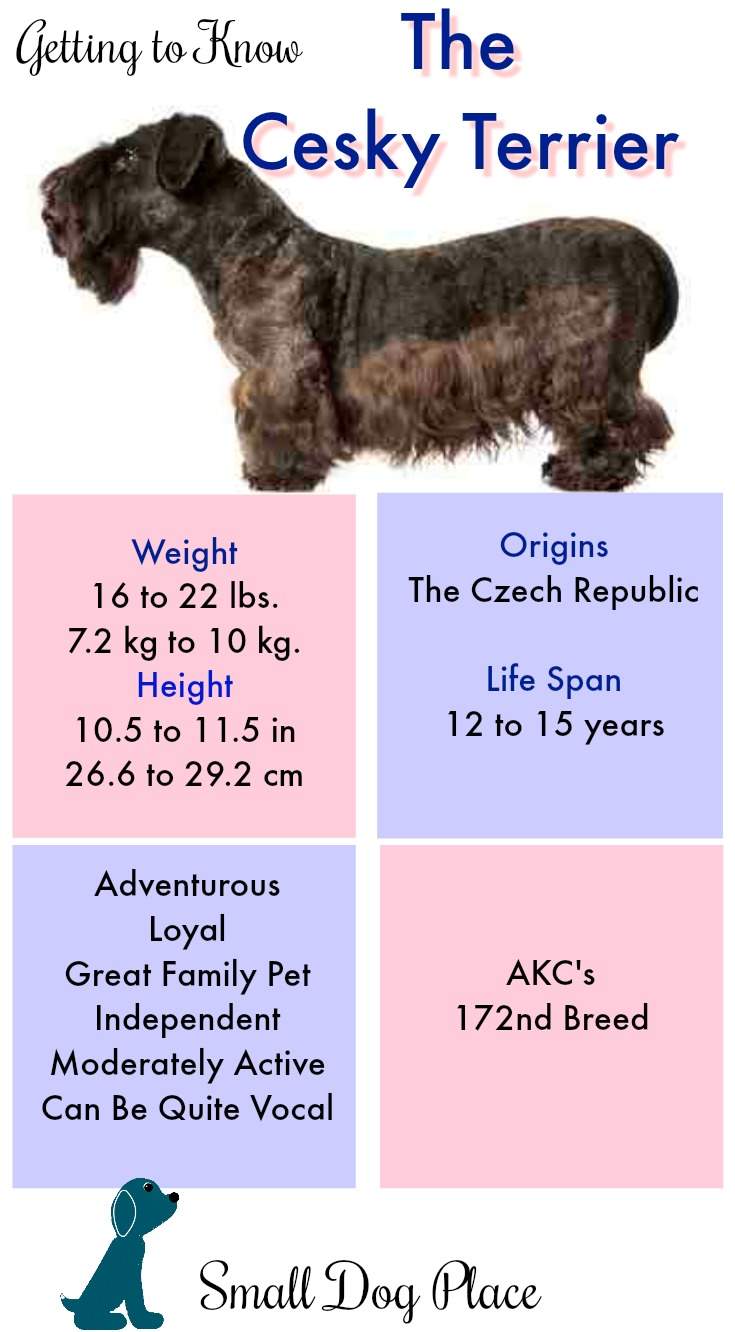Cesky Terrier: Excellent Hunter or Devoted Family Pet?
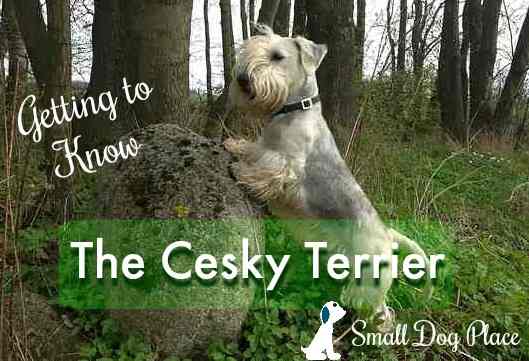 The Cesky Terrier
The Cesky TerrierPronounce it “chess-kee,” meaning Czech
Bred for hunting, the Cesky makes an excellent family pet. They are sweet and mild mannered and want to please.
They crave attention and do not like being left alone, but are very adaptable and will feel equally at home in the county or city.
They are playful, calm and inquisitive indoors, but outside, their instincts are likely to take over.
Hunting and chasing small animals are inborn traits, so training and early socialization are two tasks that every Cesky owner must accomplish.
Terriers like to dig, so if you plan to give your Cesky some quality outdoor time, be sure your fence is secure.
With strangers, Cesky Terriers can be reserved but polite. Continual socialization is recommended for this breed throughout their life.
They are relatively easy to train and respond to commands.
Like other terriers, he does have his independent streak and can be stubborn at times.
Praise and food work well for training success.
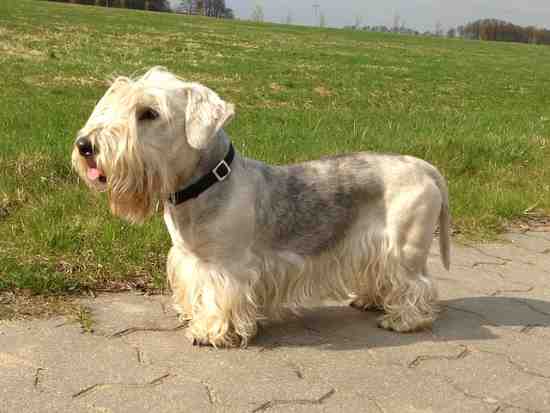
These dogs are great with kids and do well with other dogs as long as they have been introduced and socialized at a young age.
They don’t do well with pocket pets such hamsters, gerbils, mice and rabbits because of their natural instinct to hunt and kill small animals
The Cesky is one of those breeds that are born one color and tend to lighten up as they get older.
Adult colors are gray but they are born black with white areas on their body. Two years later, your dog will be any shade of gray from very dark charcoal to almost white.
The downside to this breed is its lack of availability. They are very rare and if you think this is the breed for you, you may be in for a wait.
According to the AKC, there are only 600 Cesky Terriers in the U.S.A. as of 2015.
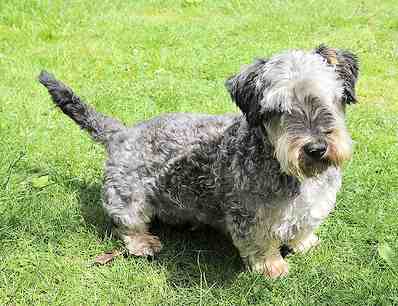
Quick Facts About the Cesky Terrier
Other Names Used: Bohemian Terrier, Czech Terrier
Affiliation: AKC Terrier Group
Size
Height: Males: 11.5 inches (29.2 cm), Females: 10.6 inches (26.6 cm)
Weight 16-22 pounds
Coat Type: Long, Fine, Silky and slightly textured
Colors: Gray with Tan, Cream, Silver, Yellow Furnishings, Gray with White Markings
Country of Origin: Czech Republic
Activity Level: Medium
Life Expectancy: 12 to 15 Years
Good with Children: Yes
Good with Other Pets: Yes
History
The Cesky Terrier is a recent addition to the dog world and its history is well documented. Many breeds go back hundreds if not thousands of years, but the Cesky got it beginnings in 1948.
A Czech breeder, František Horák was an avid hunter and bred Scottish terriers. He wanted a dog that was able to hunt in packs the forests of Bohemia and the Scotty was not well suited to pack hunts.
So he purchased a Sealyham Terrier because he thought they would make better hunting companions.
Years passed as Mr. Horak continued to study both breeds. He wanted a hunting dog that would also make a loving family member.
This translates into a well-muscled, short legged rugged hunting dog. Plus a dog that could easily be cleaned up at the end of the day and turned the ideal family dog.
As he dreamed about his perfect dog, he kept careful notes on the dog’s physical characteristics and his breeding,
He so he crossed a Sealyham Terrier with a Scottish Terrier. The breed became known in other parts of the world and was first recognized by the Federation Cynologique Internationale in 1963.
It first migrated to Germany, the Scandinavian countries and then to what was then the Soviet Union. From there, the breed made its way to England, Canada and, in the 1980’s, to the United States.
In 1980, a group of American enthusiasts imported the breed into the U.S. and formed the Cesky Terrier Club of America.
The AKC first accepted the breed into their Foundation Stock Services in 1996 and took the American Cesky Terrier Fanciers Association as the parent club. Both organizations remain active in America.
Then in 2011, the Cesky Terrier was officially recognized by the AKC in the Terrier Group. This dog is AKC’s 172nd breed.
The Breed, At a Glance
| Breed Traits | Rating |
|---|---|
| Playfulness | |
| Affection Level | |
| Friendliness Towards Strangers | |
| Good with Children | |
| Good with Other Dogs | |
| Exercise Needed | |
| Ease of Training | |
| Watch Dog Ability | |
| Grooming Requirements | |
| Shedding | |
| Cold Tolerant | |
| Heat Tolerant |
Dog Breed Ratings Got You a Little Confused?
Here's a little help in understanding them
- Playfulness: Most Playful = 5 Least Playful = 1
- Affection: Most Affectionate = 5 Least Affectionate = 1
- Friendliness Towards Strangers: Most Friendly = 5 Least = 1
- Good With Children: Great= 5 Not Good with Children = 1
- Good With Dogs: Great = 5 Not Good Around Dogs = 1
- Exercise Required: Extensive Daily Exercise = 1 Minimal = 1
- Ease of Training: Very Easy = 5 Difficult = 1
- Watch Dog: Excellent Watch Dog = 5 Minimal = 1
- Grooming: Time Consuming = 5 Minimal = 1
- Shedding: Heavy Shedder = 5 Minimal = 1
- Cold Tolerance: Well Tolerated = 5 Poor Tolerance = 1
- Heat Tolerance: Well Tolerated = 5 Poor Tolerance = 1
Personality
Somewhat reserved by nature, these dogs are loyal and protective of family members.
Clever, adventurous, they make a great family pet. They are active and terrier through and through. This means that they love to dig and chase. They make excellent watch dogs but are not considered to be overall vocal.
They make an excellent playmate for active children and enjoy a good daily walk.
They are considered easy to train. Even though they are active, they do not require a lot of work out. A backyard where they can run and a daily walk will all that is necessary.
Grooming
As is the case with most terrier breeds, the Cesky requires a moderate amount of grooming. Unlike many terrier breeds that are hand-stripped, the Cesky is clipped about once per month to keep them looking their best. He has a silky, somewhat wavy coat that doesn’t shed much. Daily brushing is ideal.
Long hair on the muzzle, legs and featherings can be brushed daily using a pin or bristle brush.
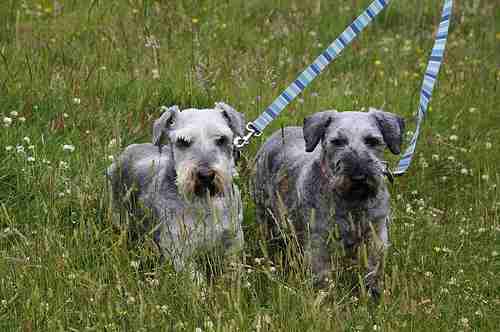
If the dog gets very dirty or muddy, it is recommended that the dog be allowed to dry before being brushed.
Much of the dirt/mud can be brushed out. Some areas of the body can get matted such as under the arm area. Bathing is important to keep the coat looking its best and a quick blow dry.
Nails need to be trimmed short through clipping or grinding. Ears are prone to wax buildup so they should be checked on a regular basis. Hair continues to grow inside the ears, so these hairs should be plucked to prevent infection.
The hair between the paw pads also grow. Trimming these hairs as well as clipping around the foot will prevent the Cesky from bringing mud and dirt on his paws into the house. Teeth should also be often brushed.
Health Concerns
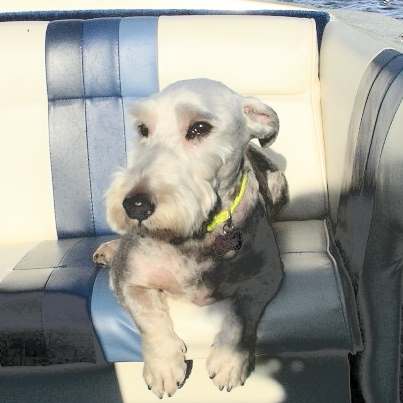
Cesky Terriers are considered to be quite healthy, but like many other small breed dogs, prone to patellar luxation, cardiac and eye problems.
Pros
- Great Family Dogs
- Very healthy
- Excellent with children
- Easy to train
Cons
- Rare in many parts of the world
- Have strong prey drive, digging and other terrier qualities
- Needs socialization early and throughout the lifespan
National Breed Club
American Cesky Terrier Fanciers Association
About Janice (author and voice behind this site)
Having lived with dogs and cats most of her life, Janice served as a veterinary technician for ten years in Maryland and twelve years as a Shih Tzu dog breeder in Ohio.
Her education includes undergraduate degrees in Psychology with a minor in biology, Early Childhood Education, and Nursing, and a master's in Mental Health Counseling.
She is a lifelong learner, a dog lover, and passionate about the welfare of animals. Her favorite breed for over 50 years has been the Shih Tzu, but she has also lived with Poodles, Maltese, Yorkshire Terriers, Beagles, English Bulldogs, Carin Terriers, and a Cocker Spaniel.
When not writing, reading, and researching dog-related topics, she likes to spend time with her eight Shih Tzu dogs, husband, and family, as well as knitting and crocheting. She is also the voice behind Miracle Shih Tzu and Smart-Knit-Crocheting
Does This Article Deserve Your Thumbs Up?
We always appreciate your support and encouragement. Your thumbs up means so much to us. Please like this article.
If you find this page or any page on Small Dog Place Helpful, or useful in anyway, I'd love it if you would click the small heart found on the bottom right of each page.
You can also share or bookmark this page -- just click on the:

Free Monthly Newsletter
Sign Up for Our Free Newsletter and get our Free Gift to You.
my E-book, The Top 10 Mistakes People Make When Choosing a Dog (and how to avoid them)
